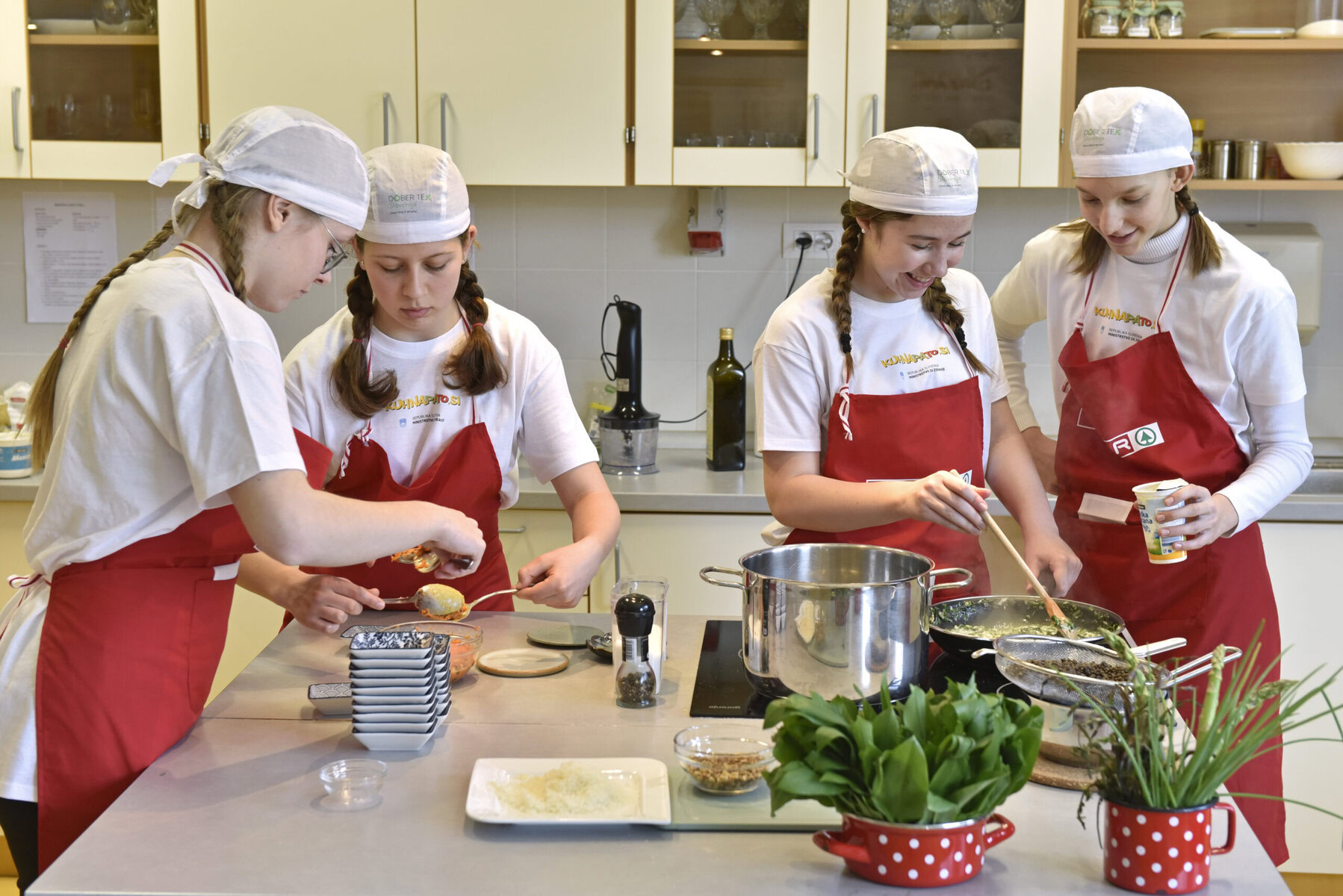
reasonstobecheerful.world
Schoolchildren Are Reviving Slovenia’s Sustainable Culinary Heritage
Ten-year-old Erik will be a mechanic when he grows up, but in the meantime, he’s putting his practical skills to the test by reviving half-forgotten traditional recipes. With seven of his classmates, he regularly bakes and cooks in the home economics classroom, practicing for the main event: preparing a traditional regional lunch for over 200 of his peers at the primary school in Dobje, a small municipality in the rural east of Slovenia.
Though the country is smaller than New Jersey, it boasts 24 distinct culinary regions, reflecting a complex history at the intersection of southern, central and eastern Europe. However, much of this regional culinary heritage is all but forgotten, due to the strong influence of Viennese, Italian and Balkan cuisines. “When you ask someone about traditional Slovene dishes, they can maybe think of five, tops,” says Anka Peljhan, who started project Kuhnapato (roughly translated as “kitchen and all that”) 14 years ago.
Students cook together at Primary school Šturje. Courtesy of Kuhnapato
The project’s premise is deceptively simple: Children in participating schools cook traditional regional meals for their peers throughout the school year. This seemingly quaint idea touches on a pressing issue: Global food trade has more than doubled since 1995, and the global food system now accounts for 30 percent of the world’s emissions. Beyond their cultural importance, traditional recipes are time capsules from a time when food was considered a valued and often scarce local resource, not a globally traded commodity. Home cooks depended on local and seasonal ingredients, wasting food was close to sacrilege, and meat was only eaten on Sundays, if at all. Accordingly, almost all of the recipes used in the project are vegetarian, and all use local, seasonal produce, often sourced from local farmers.
Pumpkin kisses made by students. Courtesy of Kuhnapato
In Slovenia, many of these regional recipes are only recorded in the handwritten notes and memories of older relatives, so children are encouraged to ask around in their community for ideas and advice. With the teacher’s help, the fifth-graders in Dobje choose a recipe appropriate for the season and their skill level: Today, it’s soup with handmade noodles and roasted walnuts. Then they don their red aprons and white hats and troop into the school kitchen, quickly dividing the tasks among themselves and getting to work. They’re already good friends with the kitchen cooks, who are on hand if help is needed — but it rarely is. “I really didn’t expect how much children in this age group can already do, it came as a complete surprise. They’re incredibly handy and resourceful,” says Mateja Pintar, the kids’ teacher.
“It’s interesting to cook, and we can joke around while we’re doing it,” says 10-year-old Zarja, Erik’s classmate and fellow cook. “And it’s nice to explain to everyone what you’ve cooked when it’s something they don’t even know and they’re totally excited!” Eleven-year-old Ana agrees: “It’s nice when we get compliments.” She has also started cooking at home under her mom’s supervision. “I learned some recipes that are very simple and tasty,” Ana says, “but my parents don’t even know them.”
In this way, the project’s impact reverberates through the kids’ social networks: to their peers, who are excited to try the sort of healthy fare they would usually balk at, the parents who buy more local seasonal food at their children’s request, the grandparents who have the opportunity to share their handwritten family cookbooks and knowledge of local herbs and mushrooms with their grandchildren.










